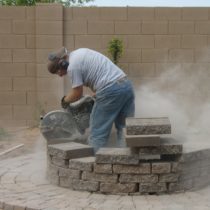Landscape Architecture for Landscape Architects › Forums › GENERAL DISCUSSION › Slide show of Maya Lins Storm King – I used to like this
- This topic has 1 reply, 10 voices, and was last updated 15 years, 3 months ago by
Pat S. Rosend.
-
AuthorPosts
-
September 7, 2010 at 10:54 am #167833
 Trace OneParticipant
Trace OneParticipanthttp://www.nytimes.com/2010/09/07/arts/design/07storm.html
but after looking at these photos I don’t..It’s fussy. The grass isn’t growing…It looks like a real pain to mow, but must be mowed, for the concept..
It is on an old gravel pit..But I think she needed a Landscape Architect to help her speak more clearly..
Anybody else have opinion, or are you all getting ready for ASLA Washington DC!!!
September 7, 2010 at 3:54 pm #167861Pat S. Rosend
ParticipantInteresting topic. IMHO maintenance needs are many times minimized in the idea of the grand concept. This project shows that maintenance is an integral part of the design. I don’t know much about this project itself. Is the idea that the becomes naturalized as it appears to be doing? If so that would seem to lose the impact of the “waves”
If not, then the maintenance aspect has overwhelmed the design and that ultimately is the final judge of a successful design in my book. If you can’t take care of it over time, it becomes a temporary installation. Is it located in a municipal site? Funding almost never allows for municipal organizations to do intense grounds keeping.
September 7, 2010 at 5:42 pm #167860 ncaParticipant
ncaParticipantWhat do you expect?
An artist, trained as an architect, working in landscape…ugh. ; )
September 7, 2010 at 9:58 pm #167859 Clayton MunsonParticipant
Clayton MunsonParticipantI agree with you Trace. It does look like a mess. The write calls it “equally art and nature”, I only see art. . . barely.
I’ve never been a fan of artist’s modifying nature and calling it art. “Over the River” for example. One that I do like however was “The Gates” in Central Park.
The write of the articles says that it is inspired by “swells of waves in midocean” I think it looks very rigid and not fluid like waves. The maintenance looks like it would be a nightmare as well, mowing a steep 15′ embankment.
Personally I think it would look better if it was planted with tall prairie grass that would offer more movement in the breeze and would appear as if the “waves” were in constant motion. Ever look across a grass prairie on a breezy day?
September 8, 2010 at 1:44 am #167858 ncaParticipant
ncaParticipantOkay, after actually looking at it and watching the video I like it with some caveats–The scale seems a little excessively large like it would be a chore to walk across, but I guess that’s the difference between art and design–you don’t need to think about things like comfort and usability, which is refreshing. If the entire wor d were comfortable and usable it would be a pretty boring uninspiring place.
As far as maintenance–that looks like a shortgrass prairie/native seed that was used–is there really much maintenance requirement? But really, maintainability is the mark of good design..ahem art?
September 8, 2010 at 1:56 am #167857 Andrew Garulay, RLAParticipant
Andrew Garulay, RLAParticipantI wonder if it might have been a trip to the Palouse of eastern Washington and the panhandle of Idaho that inspired this. …. this scale might seem even more excessive.
http://onlinephotolibrary.experiencewashington.com/details2.asp?id=…
September 8, 2010 at 12:42 pm #167856 ncaParticipant
ncaParticipantThats cool. Do people farm that or is it used recreationally?
It’s the idea of ‘hypernature’ again.
September 8, 2010 at 1:42 pm #167855 Trace OneParticipant
Trace OneParticipantI agree, Andrew, very cool..What type of geological formation is that? I geuss I can look it up..Lets send it to Maya Lin and ask her if that is what she is aiming at..
It does look like she used some sort of meadow mix for the grass, in her design, which seems curious since it seems the waves are meant to remain mowed..
Like I said, she needed to consult with Andrew or Nick, for a small fee, to get it right..
September 8, 2010 at 2:58 pm #167854 Trace OneParticipant
Trace OneParticipantYeah, Henry, does look a lot like A.E. Bye’s George Soros landscape, I thought of that also..Love Ed Bye..One of my favorites..
September 8, 2010 at 4:58 pm #167853 Andrew Garulay, RLAParticipant
Andrew Garulay, RLAParticipantThe Palouse was formed (or is formed) by soil blowing in from the west. If I remember correctly, there can be 40′ of soil. They do dry land farming of grains and legumes … wheat, peas, and lentils for the most part.
You see this country in a lot of car commercials and as the default background for Windows XP.
September 8, 2010 at 8:01 pm #167852Tanya Olson
ParticipantInteresting and compelling photos – the earthwork seems to flatten the landscape into a ‘picture’…which might be what she meant to do – certainly a concept with a long history in landscape architecture if we want to include Zen gardens in our tradition.
On the downside, it does appear to be pretty weedy. I can’t imagine any farmer or county weed control employee could be happy to see a photo of a butterfly on a THISTLE of all things. (yes, I realize there are native thistles, but this seems to be Canada thistle).Wouldn’t it be cool if they just let the native plants slowly take over? I would love to see this rigid structure soften and disappear into the forest – oooh – can you imagine stumbling on a landform like this in a forest? Too Andy Goldsworthy-esque?
September 8, 2010 at 8:06 pm #167851 Trace OneParticipant
Trace OneParticipantHm, don’t know Powelton Village, Henry! I graduated from Penn in 1987 (a different century!) -Maybe Powelton wasn’t there yet? Philly is, however, how I know Mr. Bye – he was a studio master for a really great studio in the final year..I miss Fairmount Park and the Wissahickon – great parts of Philly! should be a good area to be an LA, I think?
September 8, 2010 at 9:02 pm #167850 Trace OneParticipant
Trace OneParticipantI agree about the Thistles, Tanya! What a way to document a landscape – close-up of butterfly..
And I like your idea of letting it grow out, become fuzzy over time, weeds waving in the wind..- it definitely needs that! And also thanks for the Andy Goldworthy reference – new one for me, never heard of him – that was interesting!.September 9, 2010 at 2:34 am #167849Tanya Olson
ParticipantHe has a number of wonderful books published of his work and if you get Netflix, there is a documentary about him – ‘Rivers and Tides’ – a whole new take on landscape art if you ask me. Check out his work in icicles.
September 9, 2010 at 5:31 pm #167848 Thomas J. JohnsonParticipant
Thomas J. JohnsonParticipantI don’t understand any of your criticism… Seriously, give me a break… it’s an old gravel pit! What was she supposed to do with it?
When pushing the boundaries of “Landscape Architecture” mistakes will happen. It’s called experimentation. An abandoned gravel pit seems like the ideal place to experiment. You can’t really get any worse than a giant scar on the earth.
Please review the basics of The Scientific Method. Research, Analysis, Synthesis, Repeat. What Maya Lin has done, if nothing else, is create a wonderful case-study for similar designs in the future. How will the mounds weather? What kind of maintenance is required? What is the overall experience and how can that be modified/ effected? What happens at the boundaries of the forest/wave interface? What was the construction process like and what would you do differently next time? There are a host of questions that this site could help address.
And doing a bit more research could have answered many of the issues you raised… Not fluid enough? It’s based on an actual model of water movement… Need to mow it? Are you sure? It’s planted with native seed…. Too big? Not easy to walk through? That’s the point.
From Miya Lin’s Website:
Storm King Wavefield
Opening at Storm King Art Center in Mountainville, NY, in May 2009The Storm King Wavefield encompasses an eleven-acre site, with the earthwork covering four acres at the southwest border of the Storm King Art Center in Mountainville, New York. Formerly a gravel pit, the site is an environmental reclamation project in compliance with The New York State Department of Environmental Conservation. The work maximized the soil from the existing site and was created with a naturally made drainage system beneath the soil. Grasses were planted that are native and require minimal watering needs stressing the sustainable nature of the work. The carbon footprint of the construction of the piece was calculated and will be fully offset by the planting of 260 indigenous trees .
The Wavefield is comprised of seven rows of undulating, rolling waves of earth and grass. The waves range in height from ten to fifteen feet, with a trough-to-trough distance of approximately forty feet. The work at Storm King is the largest site-specific art installation that Lin has created, and it marks a culmination in her series dedicated to the exploration of water-wave formations. Because it is executed in the same scale as an actual set of waves, the viewer’s experience is similar to that of being at sea, where one loses visual contact with adjacent waves. Compound curves allow for a complex and subtle reading of the space in the form of an environment that pulls the viewer into its interior and creates a sense of total immersion.
Also, let’s not forget that it’s only 1 year old. Maybe we should give the site time to mature before jumping all over it with criticism… I foresee it becoming very beautiful with age, perhaps requiring an undulating network of d.g. paths and wood/stone steps to navigate waste/chest high grasses. Wouldn’t that be fun to design!?
-
AuthorPosts
- You must be logged in to reply to this topic.


